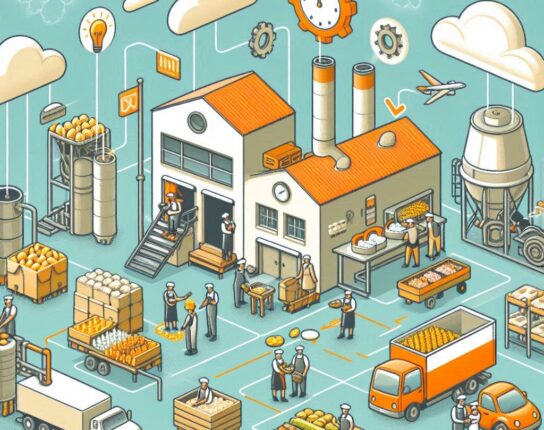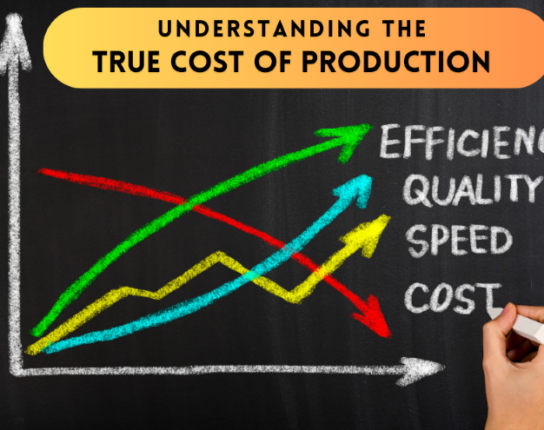Constantly changing marketing conditions. Following regulatory procedures that vary by jurisdiction. Making adjustments to soothe consumer worries brought on by a pandemic. Dealing with supply-chain disruptions and concerns about inventory. If any of this sounds familiar, you’re probably a part of the food and beverage (F&B) industry. This market sector has dealt with a lot over the past year, and it won’t be going back to normal anytime soon. The growing demand for touchless and automated options will never fully revert to pre-pandemic status. This is where AI comes in. AI is Changing the Food and Beverage Industry for the better.
The F&B Industry Always Faces Unique Challenges
Global trends are continually forcing the food and beverage industry to shift directions and innovate on the fly. Consumer demands require an agile response system to keep up to speed without
missing a beat. Food safety regulations always force you to be adaptive. Still, you also want to fulfill consumer wishes even if there isn’t a regulation backing it up.
Case-in-point: if your customers want touchless options, you should listen, even if there’s no legal or regulatory force behind the demand. If you don’t please your customer base at a human level, someone else will do it better and force you out of the market. But how do you implement these continual changes without going bankrupt in the process?

Modern Problems Require Modern Solutions
Food and beverage manufacturers face a unique set of challenges in any market climate. Monitoring equipment, maintaining manufacturing lines, and finding ways to cut supply chain waste are just the beginning. Base efficiency is always a priority in a fast-moving business like F&B, where margins are often slim.
Rolling out new products or shifting to seasonal favorites can cause production delays. Even without a deliberate change on your part, any of your ingredients could suddenly become more expensive or harder to find.
The lockdowns 2020 affected many businesses in unexpected ways. Things as unrelated as tequila and bicycles became unexpectedly hard to find. If supply chain disruption faces your business, what is your backup plan? Do you have substitutes or alternatives readily available?
All along the way, someone has to adjust for current inventory versus current demand. Other systems control food quality, monitor output, and make supply orders. Disruption to any of these systems can cost a company enormous amounts of time and money. Failing to deliver a finished product on time can also damage a brand’s reputation, no matter the cause.
How Can AI Help the F&B Industry?
Predictive AI algorithms can help collate massive amounts of data and create workable solutions. With deep learning, you can task AI to analyze trends and make suggestions to stay ahead of consumer demands. As neural networks continue to become more sophisticated, so do their problem-solving abilities. No longer are we limited to narrow AI applications.
We are entering arenas once relegated to science fiction. AI programs drive cars, play chess and beat human grandmasters, and perform other tasks once thought impossible.
AI can help you identify your most valuable customers. Using both the average order value (AOV) and the frequency with which they order, AI technology can help you keep tabs on them. By keeping an eye on your best customers, AI programs can identify subtle shifts in ordering patterns that you may need to address.
Did your highest AOV customer suddenly start ordering half the usual number of supplies? Abrupt changes in ordering patterns might signal client dissatisfaction with your products. The sooner you catch a discrepancy, the sooner you can address it.
The Benefits of Using AI in Your Production
Using AI-controlled machinery has benefits that go far beyond simple automation. Fully automated processes can’t change procedures based on incoming sensor data, but AI systems can. By anticipating your production needs and calculating the best way to adjust, AI can manage multiple integrated systems at once. Every minute saved reduces costly mistakes and improves your overall output.
Efficiency
Using AI to evaluate routine processes can save you time and money in ways you may not have considered. If you need to clean assembly lines between product changeovers, AI software can help you pinpoint exactly how long the cleaning cycle needs to last. AI can go beyond using past experiences to measure peak efficiency. AI can scan your equipment for food particles and determine whether you need another sanitation round.
Safety
By sensing and flagging unsafe conditions, AI can make adjustments before issues become more serious. You can even task AI with alerting employees if they aren’t wearing the necessary safety equipment. When it comes to regular equipment maintenance, AI programs can calculate the best time to shut down production before something serious happens. Avoiding expensive equipment repairs and manufacturing disruptions can save you serious money in the long term.
Cost Reduction
The sooner you catch inefficiency, the sooner you can stop wasting money. An AI system’s ability to continually analyze data means that it can see issues more quickly than humans. Identifying extra steps or unnecessary system delays can make an AI program promptly pay for itself.
Not only can AI identify waste in your production steps, but it can also make automated tasks cheaper to perform. When you need more variability than pure automation can provide, AI-driven machines can be the answer. Performing repetitive tasks while still retaining the ability to adjust due to circumstance, Artificial Intelligence offers you the best of both worlds.
Reducing Product Loss
Plant-based food products have distinctly variable decay rates. If you handle several different vegetable ingredients, you might need different protocols for each. For example, if you supply raw vegetables to grocery stores, AI can pinpoint optimal storage conditions and minimize product spoilage by creating unique procedures per product.
AI recognition software can identify spoiled products and remove them before decay spreads to the rest of the batch. AI can also help you regulate storage temperatures and determine the optimal timing of misting to maintain crisp veggies for your clients.
Better Ability to Pivot On-Demand
With the complex analysis that AI can perform continually, you can quickly change gears to meet new market demands. AI systems can help you work the kinks out of a new procedure with less time wasted, thanks to their ability to perform complex calculations at extremely high speed. Using an AI to run analysis is like hiring a team of MIT mathematicians to work around the clock, but at a fraction of the cost.
Harvest Food Solutions Brings the AI Advantage to You
We know that you have a lot on your plate. You need simple solutions that help you grow your company while reducing input costs. We use AI software solutions to help you manage inventory, order supplies, and react to emerging market conditions. Don’t waste time with spreadsheets and trying to manage things on your own. Put the power of smart AI solutions to work for you.
At Harvest Food Solutions, our goal is to make your business run more smoothly. Our software solutions offer increased efficiency and let you focus on what you do best: delivering quality perishable food items to your clients.










